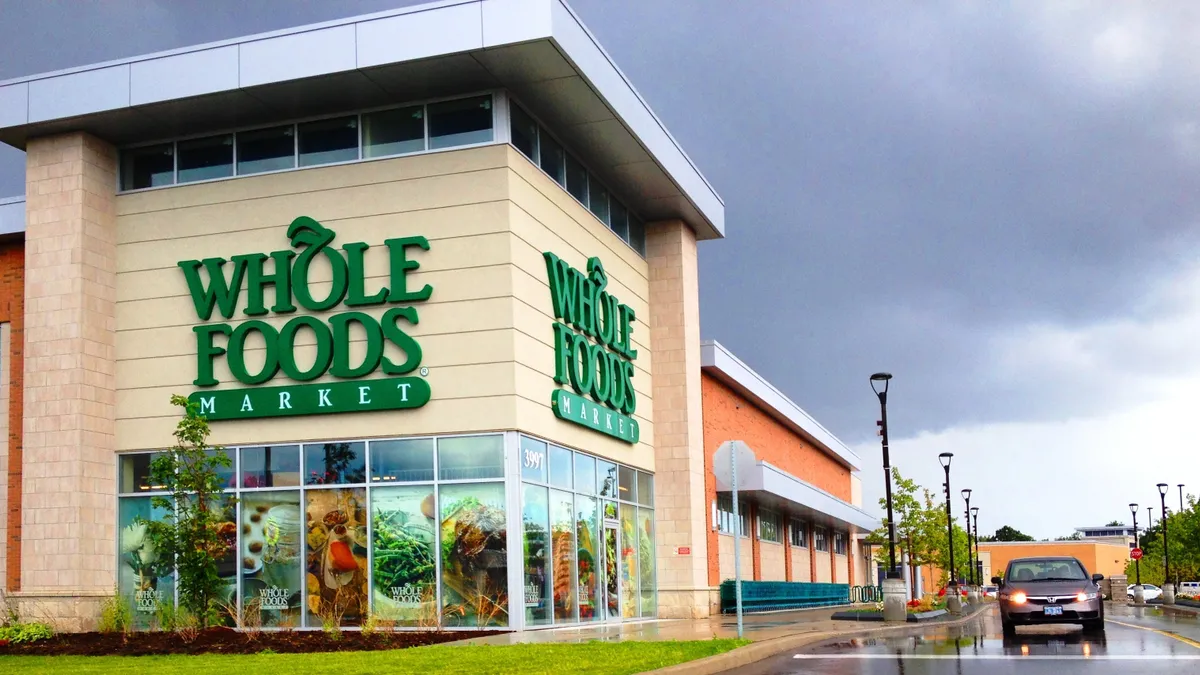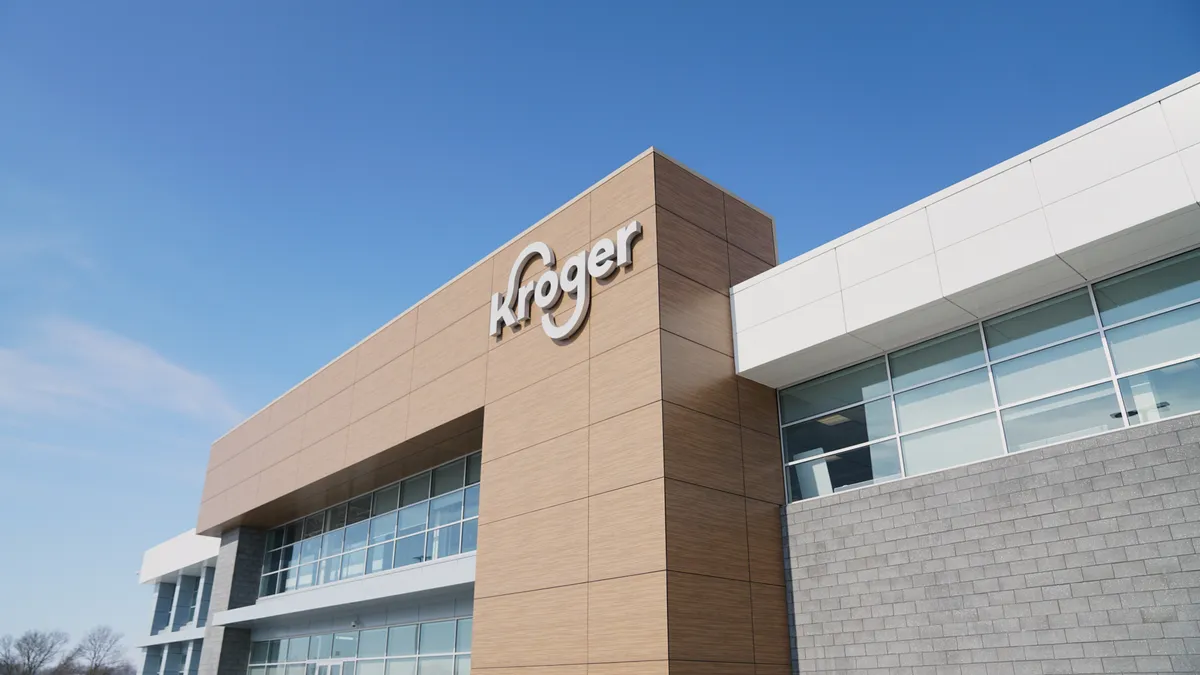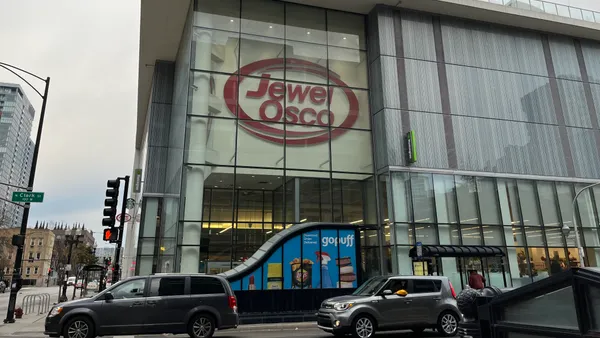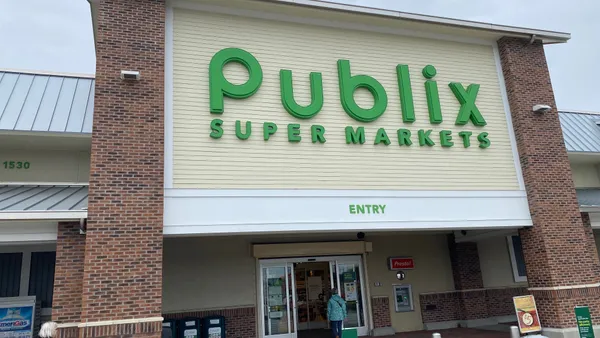Dive Brief:
- Amazon’s earnings on Thursday revealed a slow-growing Whole Foods division. Net sales from physical stores, the vast majority of which are Whole Foods locations, came in at $4.25 billion, the lowest quarterly total for the year and down from $4.31 billion in the second quarter
- Overall, Amazon posted a record profit of $2.88 billion but disappointed Wall Street with revenue and holiday sales projections that came in below Wall Street forecasts. Sales were $56.6 billion compared to $57.1 billion that was estimated. The web giant also delivered a disappointing outlook for the key holiday period with fourth-quarter sales predicted to rise between 10% and 20%, or as much as $72.5 billion, a level that trailed the $73.9 billion predicted by analysts, according to Reuters.
- Amazon’s stock price fell 8.1% in mid-morning trading on Friday to $1,637 a share. Some analysts say they aren’t alarmed by the results, noting the company's many revenue streams and strong operational abilities.
Dive Insight:
Amazon’s earnings provide only a small window into Whole Foods’ performance. But information gleaned from physical store sales during the past year, it’s apparent that the business has experienced some modest ups and downs and has not, as of yet, shown signs of the much-feared dominance heralded when Amazon took the reins.
Overall, Amazon seems to have steadied the ship at Whole Foods — which is a good first step for a company that was previously floundering. The question is, can the e-tailer effectively innovate in stores and online and grow the business as many in the industry expected following the $13.7 billion deal last year?
So far, Amazon’s main strategy with the grocer is to integrate Prime offers, expand e-commerce and continue the operational streamlining that was underway prior to the acquisition. Stores across the country now feature blue and yellow tags reflecting sale items along with rotating weekly Prime offers. Home delivery through Prime Now, which offers a very competitive free two-hour shipping option to members, is available in 60 cities while store pickup, which also is free to Prime members for orders more than $35, is available in 10 cities.
“I think we've started to show our strategy on the Whole Foods side,” Brian Olsavsky, Amazon’s chief financial officer, said during yesterday’s earnings call, noting that the company will continue to develop “omnichannel overlap, especially in the grocery business.”
There’s been some unrest among suppliers and industry followers, who note Whole Foods’ growing focus on large and scalable brands. But others say Amazon is injecting smarter business sense into a grocer that, for better or worse, has become a national brand.
“While we hear the occasional squeals from old-hand stakeholders within the Whole Foods operation, we believe the changes Amazon is making are necessary and delivering reasonable initial results,” Neil Saunders, managing director of Global Data, wrote in a note emailed to Grocery
While the slow growth of Whole Foods to this point won’t worry Amazon — a company that has shown an affinity for the long game — it does indicate competitive pressure is having an impact. This seems to be the case across the retail industry, Saunders noted, with retailers like Best Buy and Macy’s stepping up their e-commerce game.
In grocery, Walmart has raced out ahead of Whole Foods and is putting pressure on Amazon’s broader online food and beverage business with free pickup from nearly 2,000 stores, along with an expanding same-day and two-day footprint. Target has quickly built out these same services, as has Kroger, Albertsons and various other supermarket chains that have linked up with third-party e-commerce providers.
A recent report from Deutsche Bank estimated that Amazon will remain the online grocery leader in the coming years, but that Instacart and Walmart will increasingly challenge its dominance. So while Amazon is renowned for its ability to innovate and dominate, it may have a harder time breaking away from the pack in food retail.













